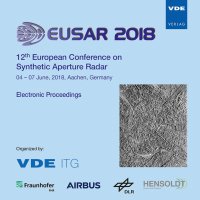Geostatistical Analysis and Mitigation of Atmosphere Induced Phase In Terrestrial Radar Interferometric Observations of An Alpine Glacier
Konferenz: EUSAR 2018 - 12th European Conference on Synthetic Aperture Radar
04.06.2018 - 07.06.2018 in Aachen, Germany
Tagungsband: EUSAR 2018
Seiten: 6Sprache: EnglischTyp: PDF
Persönliche VDE-Mitglieder erhalten auf diesen Artikel 10% Rabatt
Autoren:
Baffelli, Simone (ETH Zurich, Switzerland)
Frey, Othmar (ETH Zurich & Gamma Remote Sensing, Switzerland)
Hajnsek, Irena (ETH Zurich, Switzerland & German Areospace Center (DLR), Oberpfaffenhofen, Germany)
Inhalt:
Terrestrial Radar Interferometry is used to map surface displacement velocites with high temporal resolution, irrespective of sunlight and cloud cover. The main factor limiting estimation accuracy are variations in the atmospheric refractive index, observed as atmospheric phase screens (APS). A statistical model for APS assuming a separable spatio-temporal covariance structure is described. It facilitates the extrapolation of the APS from observations at persistent scatterers (PS) using regression-Kriging, which is followed by a timeseries inversion to estimate the surface velocity. A statistical analysis of the APS is performed using a Ku-Band radar timeseries of Bisgletscher, a glacier in the Southwestern Swiss Alps. The results show that, while some non-stationarity in the covariance structure is observed at large timescales, the covariance models obtained assuming separability perform well in APS mitigation using regression-Kriging.


